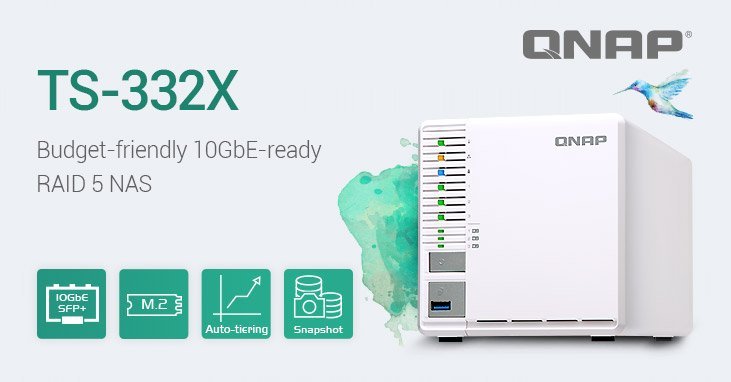QNAP informs Techzine about the introduction of the TS-332X, a NAS that supports three SATA M.2-SSDs of 6Gb/sec. The processor, a 1.7 GHz Alpine AL-324 quad-core Cotrex-A57 processor, is sourced from Amazon subsidiary Annapurna Labs.
The device has 2 GB or 4 GB DDR4 RAM, depending on which model is chosen. Both versions have an upgrade option of up to 16 GB. In addition, QNAP equips the TS-332X with a 10 GbE SFP+ port for high-speed network compatibility. For example, it should be possible to carry out large-scale data applications, fast backups and repair tasks, and application containers.
Users can create a high-capacity SSD cache to speed up IOPS-intensive applications or use RAID 5 tiered storage with balanced performance and redundancy. Combined with Qtier technology, which provides automatic layer layering on the NAS, storage efficiency is optimized on M.2-SSDs, 2.5-inch SSDs and high-capacity HDDs for better system performance.
Optimization
The TS-332X uses the QTS operating system. It means, for example, that block-based snapshots allow for extensive data protection and immediate recovery. QNAP describes the TS-332X as a comprehensive all-in-one solution for file storage, backup, sharing, synchronization and centralized management.
The app center allows you to install several apps to expand the functions of the NAS. These include Container Station for LXC and Docker application containers, QmailAgent for centralizing email account management and QVR Pro to create a professional video surveillance system.
Virtual JBOD allows the unused storage capacity of the TS-332X to be linked via iSCSI as a virtual drive to other QNAP NAS devices. This should be particularly useful for organizations with multiple QNAP NAS systems to maximize their capacity.
Although the new NAS is available immediately, we cannot yet find the TS-332X online. In the announcement, QNAP does not mention prices.
This news article was automatically translated from Dutch to give Techzine.eu a head start. All news articles after September 1, 2019 are written in native English and NOT translated. All our background stories are written in native English as well. For more information read our launch article.